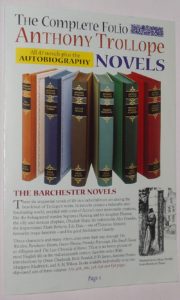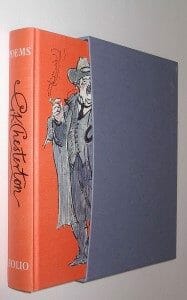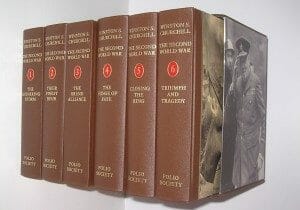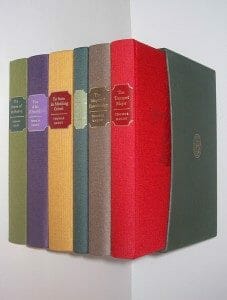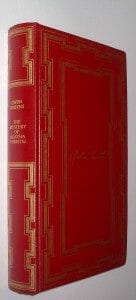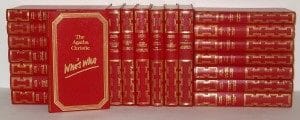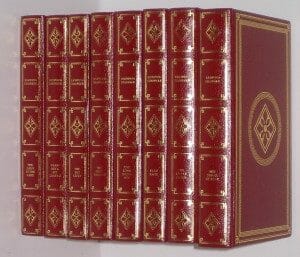A Family Prone To Death – The Brontes
Spare a thought for Patrick Bronte, priest of Haworth in Yorkshire from 1820 until his death in 1861. Patrick lived until the age of 84 – really quite an old age in comparison to most other Victorians – and in those years he buried not only his wife, but every single one of his children. This is a circumstance which every father would shudder to consider – but this was Victorian Yorkshire, and people died all the time. Not all of these people, however, were Brontes, and not all of them would ‘live on’ through the body of literature they left behind. While their physical forms of the Brontes passed away very quickly, the literary lives of the Bronte sisters have endured for centuries.
Inherently Weak?
To our modern eyes, it may well seem that there was a congenital weakness within the Bronte genepool, presumably inherited from their mother’s side. Marie Bronte, the mother of the remarkable writers and their brother, Branwell, died at the age of 38 – setting a pattern which her children would follow. At the time, it was thought that she died of tuberculosis, although medical experts now speculate that she may have suffered from uterine cancer. She was followed in a few years by her eldest daughters, Maria and Elizabeth, who contracted tuberculosis at their boarding school and died before reaching their teenage years. These deaths were certainly tragic, but not particularly unusual for Victorian Britain. This was an era before the NHS, before widespread and systemic medical knowledge, and before the option of health insurance became available for the truly health-conscious. Those who fell ill (even from curable diseases) were in danger of their lives, and women – partly due to the risks of Victorian childbirth, and partly due to the plates of sons and husbands being piled higher when it came to mealtimes than those of daughters and wives – tended to die younger than men. This fact did not, however, save the unfortunate Marie’s son – Branwell – who became the third Bronte sibling to succumb to tuberculosis some twenty years later, at the age of 31.
Mortal Influences
While such deaths may have been expected for a Victorian family, this did not mean that the sisters were unaffected by the loss of their loved ones. Indeed, the Bronte sisters appear to have been profoundly affected by the untimely demise of their siblings and mother – so much so that the strong feelings and symbolism inspired by these deaths permeates their work, inspiring both passion and tenderness by degrees. Most directly, the death of Maria is said to have influenced the character and death of the saintly Helen Burns in Charlotte Bronte’s turbulent masterpiece ‘Jane Eyre’. More obliquely, the enjoined themes of mortality and eternity run through the Bronte canon – particularly within the single, incredible novel of Emily Bronte, ‘Wuthering Heights’. Alas, Emily did not long outlive her brother.
The Curse Of The Brontes
By the time they approached their thirties, the remaining Bronte sisters – Emily, Anne, and Charlotte – had begun to carve considerable literary careers for themselves. In 1846, under the male pseudonyms Currer, Acton, and Ellis Bell, the sisters had published poems. In 1847, each sister had a novel – ‘Jane Eyre’ for Charlotte, ‘Agnes Grey’ for Anne, and ‘Wuthering Heights’ for Emily – published. ‘Jane Eyre’ received great acclaim, and ‘Agnes Grey’ was praised. The more prudish critics were shocked at the simmering passions and ‘immorality’ of ‘Wuthering Heights’, but all agreed that it was masterfully and beautifully written. ‘Wuthering Heights’ was ahead of its age – it is now considered one of the greatest literary efforts of all time. Alas, modern lovers of Emily’s work were to be denied anything else from her pen. In 1848 she sickened and died, carried off by the same disease which had killed her siblings and possibly her mother – the curse of the Brontes, tuberculosis. A tantalising legend holds that Emily Bronte was working on a second novel at the time of her death and that this, like its author, met an untimely end when Charlotte Bronte burned it. Given the passionate nature of her previous work, and the way in which the critics had treated it, it is possible that Charlotte – seeing the same emotional intensity within the new novel – burned it to save her sister from being dragged through the jaws of the critics after death. If this is the case it is a great shame, for time would almost certainly have rectified the public’s opinion of Emily’s writing, just as it did with ‘Wuthering Heights’.
The Death Of Anne
Anne and Charlotte were now the last of the Bronte siblings left alive – and Anne did not have long for this world. Anne’s work was not as popular as Charlotte’s, nor as widely discussed as Emily’s during her own time – but has since received critical acclaim not only for the skill of her writing but for her refusal to romanticise male brutality. She was arguably the greatest feminist of this undeniably feminist family, refusing to obfuscate the dark realities of Victorian male-female relations with the glamor of brooding sexuality. During her short life, she managed to publish two books – ‘The Tenant Of Wildfell Hall’ and ‘Agnes Grey’ – but sickened shortly after the death of Emily, and declined rapidly thereafter. Determined that the sea air would be good for her lungs, Anne Bronte had herself taken by donkey cart to Scarborough. However, she died at the age of 29 in 1849, and is buried in Scarborough. She, too, had succumbed to pulmonary tuberculosis.
The Death Of Charlotte
That left just Charlotte Bronte to grieve with the ageing Patrick. Charlotte is a sometimes controversial figure among Bronte lovers. As mentioned, she is thought to have burned Emily’s second novel, and she suppressed the publication of ‘The Tenant Of Wildfell Hall’ after Anne’s death for motives which she took to the grave. However, her love for her sisters is not in doubt, and seeps into her writing at many points. ‘Shirley’ – not critically acclaimed and rarely thought of these days – was written as a manner of coping with Anne’s death. She went on to publish the novel ‘Villette’ in 1853, much of which is probably inspired by her own oft-expressed but unrequited love for a married professor in Belgium. She ultimately married her father’s curate, but it seems that Charlotte did so out of a sense of womanly duty rather than much love on her part. She soon fell pregnant, opening up the possibility that a new grandchild could once more fill the depleted family life of poor Patrick – but, sadly, the weakness of the Brontes caught up with poor Charlotte. She died in 1855 at the age of 38, and her unborn child died with her. She was initially thought, like her siblings, to have fallen prey to tuberculosis – but is now considered to have suffered and died from extreme morning sickness, the same condition with which the Duchess of Cambridge was hospitalised with while pregnant with Prince George in 2013.
Patrick Alone
Patrick Bronte had come tantalisingly close to seeing his family proceed into the third generation. To lose both his final child and his first grandchild at once must have been a terrible blow. Patrick, by now very elderly, poured the rest of his life into helping Elizabeth Gaskell with a biography of his daughter Charlotte, and saw to the posthumous publication of Charlotte’s first, rejected novel, ‘The Professor’. His widowed son in law stayed with him until his death, and it can only be hoped that this man and the comforts of his daughters’ literary afterlife provided the last living Bronte with some solace.
This article is by courtesy of Helen Salter
Find more at The Novels of the Sisters Bronte
Browse all my books at Hcbooksonline
